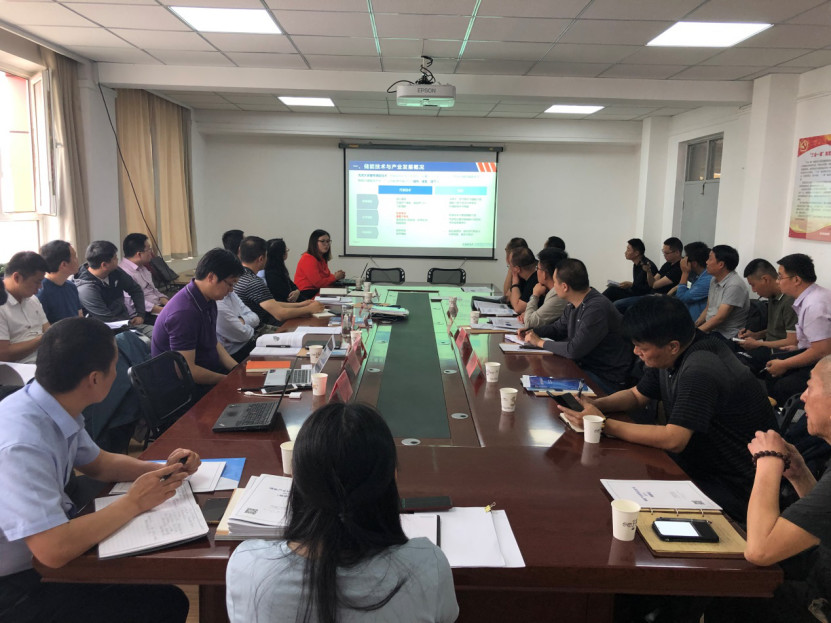CNESA attends the solar-plus-storage seminar hosted by the Xinjiang Development and Reform Commission
Recently, the Xinjiang Development and Reform Commission and the Xinjiang Regulatory Office of the National Energy Administration released the “Notice on the Development of Generation-side Solar-plus-storage Projects.” In early June 2019, CNESA was invited to a Xinjiang solar-plus-storage policy seminar hosted by the Xinjiang Development and Reform Commission, where suggestions were collected on energy storage applications, business models, and the safe construction and operation of energy storage systems.
The “Notice on the Development of Generation-side Solar-plus-storage Projects” highlights the use of energy storage in creating a modern energy system and transforming the way that energy is produced and used. Key points of the “Notice” include:
1) Solar-plus-storage demonstration projects will be developed in four regions of southern Xinjiang. Kashi Prefecture will install no more than 15,000 kW of capacity, Hotan Prefecture will install no more than 10,000 kW of capacity, Kizilsu Prefecture will install no more than 5,000 kW of capacity, and Akesu Prefecture will install no more than 5,000 kW of capacity.
2) This round of demonstration projects will focus only on generation-side solar and energy storage installations. Such demonstrations will have storage and solar PV operate concurrently (solar-plus-storage), receive optimized grid dispatch signals, performing output smoothing, and increasing energy consumption. Energy storage system capacity must be no lower than 15% of the total capacity of the solar PV system, and the system must have a duration of no less than 2 hours.
3) The demonstration projects are set to complete construction by October 31, 2019. Beginning in 2020, the solar PV stations will add 100 hours of power generation each year for five years.
4) Power prices for solar PV stations with paired energy storage are based on the current power price policies for solar PV stations. Solar and energy storage stations operating in conjunction as one unit will also receive the same subsidies.
5) Operational energy storage systems must include a battery protection system, automated fire alarm system, fire suppression system, and other preventative safety measures as they apply to each site.
6) Private industry stakeholders are encouraged to invest in the project demonstrations using energy storage technologies and equipment that have potential commercial viability. Energy storage technology R&D demonstrations are highly encouraged. The pilot projects are inclined to utilize equipment from companies that invest and manufacture in Xinjiang.
Author: CNESA Research Translation: George Dudley

